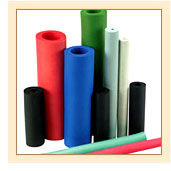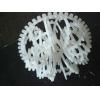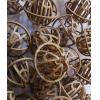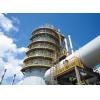Properties of NBR
- Nitrile Rubber belongs to the family of unsaturated copolymers of acrylonitrile and butadiene.
- The physical and chemical properties of this rubber vary depending on the polymer’s composition of acrylonitrile.
- Different grades are available for this rubber. The higher the acrylonitrile content within the polymer, the higher the oil resistance.
- It is generally resistant to fuel and other chemicals.
- It can withstand a range of temperatures.
- It has inferior strength and flexibility, compared to natural rubber.
- These rubber is also resistant to aliphatic hydrocarbons.
- It is less resistant to ozone, aromatic hydrocarbons, ketones, esters and aldehydes.
- It has high resilience and high wear resistance but only moderate strength.
- It has limited weathering resistance.
- It can generally be used down to about -30 degree celcius , but special grades can also operate at lower temperatures.
Applications
NBR is considered the workhorse of the rubber products of the automotive and industrial industries. By selecting an elastomer with the appropriate acrylonitrile content in balance with other properties, NBR is used in a wide variety of application areas requiring oil, fuel, and chemical resistance. In the automotive area, NBR is used in water handling applications and in fuel and oil handling hose, seals and grommets. With a temperature range of –40 to +125 degree celcius, NBR materials can withstand all automotive applications. This form of synthetic rubber because of its resilience is the perfect material for disposable lab, cleaning, and examination gloves.
NBR is considered the workhorse of the rubber products of the automotive and industrial industries. By selecting an elastomer with the appropriate acrylonitrile content in balance with other properties, NBR is used in a wide variety of application areas requiring oil, fuel, and chemical resistance. In the automotive area, NBR is used in water handling applications and in fuel and oil handling hose, seals and grommets. With a temperature range of –40 to +125 degree celcius, NBR materials can withstand all automotive applications. This form of synthetic rubber because of its resilience is the perfect material for disposable lab, cleaning, and examination gloves.
On the industrial side NBR is used including:
- Roll covers
- Hydraulic hoses
- Conveyor belting
- Graphic arts
- Oil field packers
- Seals for all kinds of plumbing and appliance applications
- Injection or transfer molded products
- Extruded hose or tubing
- Calendered sheet goods (floor mats and industrial belting)
- Various sponge articles





